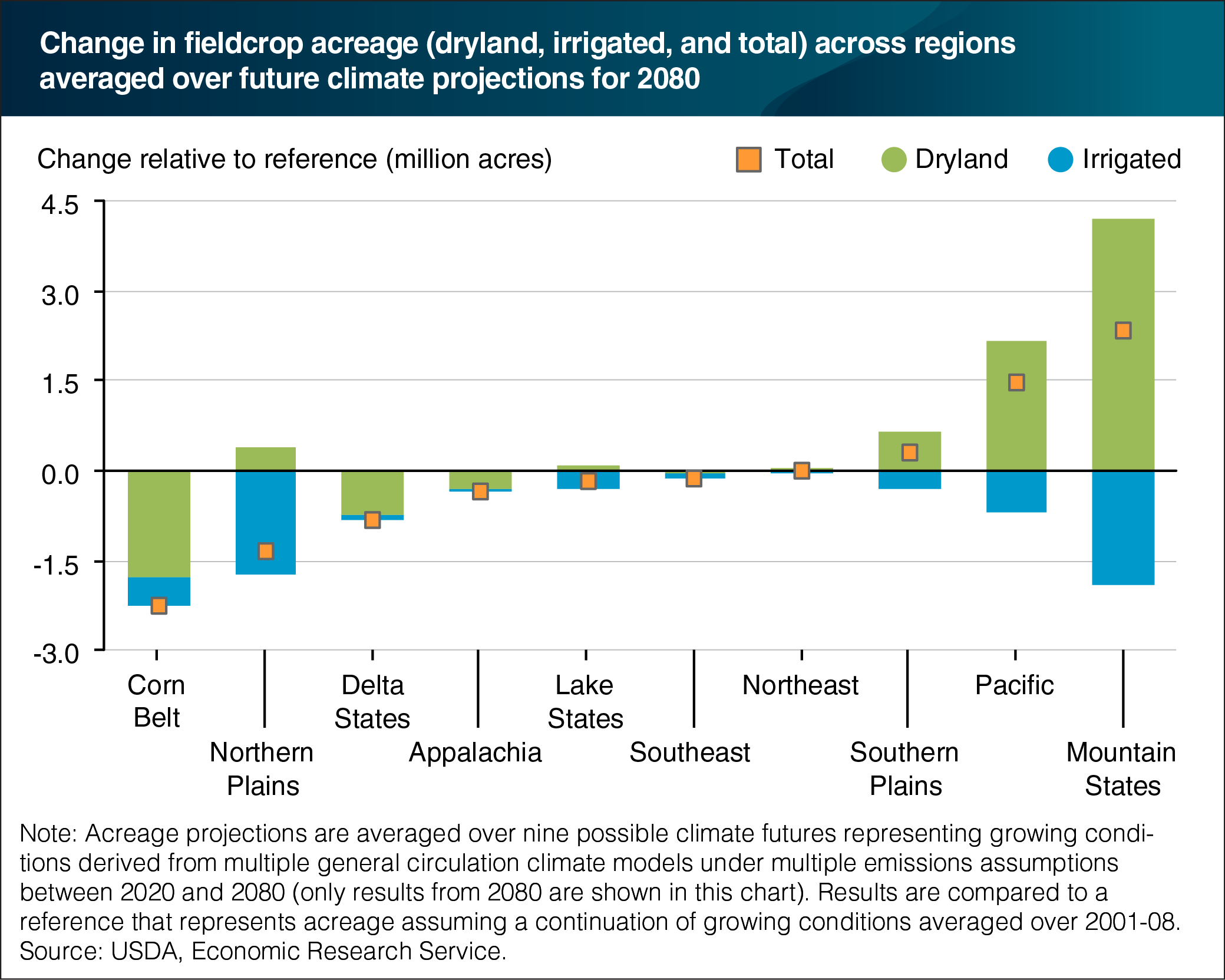Climate change is projected to cause declines and shifts in fieldcrop acreage across U.S. regions
- by Elizabeth Marshall and Marcel Aillery
- 9/9/2016

Climate models predict U.S. agriculture will face changes in local patterns of precipitation and temperature over the next century. These climate changes will affect crop yields, crop-water demand, water-supply availability, farmer livelihoods, and consumer welfare. Using projections of temperature and precipitation under nine different scenarios, ERS research projects that climate change will result in a decline in national fieldcrop acreage in 2080 when measured relative to a scenario that assumes continuation of reference climate conditions (precipitation and temperature patterns averaged over 2001-08). Acreage trends show substantial variability across climate change scenarios and regions. When averaged over all climate scenarios, total acreage in the Mountain States, Pacific, and Southern Plains is projected to expand, while acreage in other regions--most notably the Corn Belt and Northern Plains--declines. Over half of all fieldcrop acreage in the U.S. is found in the Corn Belt and Northern Plains, and projected declines in these regions represent 2.1 percent of their combined acreage. Irrigated acreage for all regions is projected to decline, but in some regions increases in dryland acreage offset irrigated acreage losses. The acreage response reflects projected changes in regional irrigation supply as well as differential yield impacts and shifts in relative profitability across crops and production practices under the climate change scenarios. This chart is from the ERS report Climate Change, Water Scarcity, and Adaptation in the U.S. Fieldcrop Sector, November 2015.

